Allegro
Technique vs. Musicality
Volume 111, No. 12December, 2011
In the opening scene of Peter Brook’s film “Meetings With Remarkable Men,” tribespeople from miles around gather at the base of a mountain range to witness a contest of musicians. The winner will not be the one who can play the fastest, or the most notes, or the hardest piece. Rather, the prize will go to the musician who can make the mountains tremble by the purity, depth, emotion and intention present in the music.
Sometimes I wonder why I wasn’t born in a place and time like that: a place and time in which the true nature of music is understood, respected and valued. A place and time where it’s easier to perceive and appreciate the more subtle layers of music. It’s hard to do when one is immersed in the Universal Soundtrack: that collective din of talking, laughing, crying, traffic, machinery, Muzak, nature sounds and broadcast media that surrounds many of us, especially in the city.
In our homes, our bodies hum along to our electrical appliances. Our refrigerator, dehumidifier, lamps – all of them run at 60 cycles per second, which is about a Bb.
Sound is with us even in a completely soundproof chamber, where John Cage reported two pitches that could not be eliminated: the whine of the nervous system and the drone of the blood in circulation.
Moreover, in our era, the population’s musical insensitivity has been cultivated gradually by several factors: less substance in pop music, the ever-upwardly-creeping volume level, the proliferation of recordings and internet music, and the competition among every type of media for the attention of the consumer.
A person has to block out most of the Universal Soundtrack in order to function. But as we shore up the chinks in our aural armor, we also sew shut the portals of mind that are empowered, indeed transformed, by access to the deepest levels of musical expression.
Even in Shakespeare’s time, people weren’t listening. As the Bard expressed in “The Merchant of Venice,”
The crow doth sing as sweetly as the lark,
When neither is attended, and I think
The nightingale, if she should sing by day,
When every goose is cackling, would be thought
No better a musician than the wren.
In the world of classical piano, the geese are cackling up a storm, according to New York Times critic Anthony Tommasini. “Virtuosos Becoming a Dime a Dozen” was his recent declaration on the front page of the Arts & Leisure section. “That a young pianist has come along who can seemingly play anything, and easily,” he notes, “is not the big deal it would have been a short time ago.” Tommasini goes on to list several of the current superpianists who are able to leap over tall pieces like Rachmaninoff’s Third Piano Concerto and the Ligeti Etudes with a single bound. Apparently, the pianistic equivalent of breaking the four-minute mile now happens with such regularity that even teenaged piano students are comfortable with such repertoire. So high has the bar been raised that the legendary Alfred Denis Cortot, remarks Tommasini, “would probably not be admitted to Juilliard now.”
If Mr. Tommasini is correct, and musical virtuosos really are becoming a dime a dozen, what does that say about the state of music today? What does it say about the future of music? And what does it bode for the music business?
Back in the day, Vladimir Horowitz thrilled audiences with his innovative interpretations of the piano repertoire. He even dared to re-write sections of pieces by Rachmaninoff, Mussorgsky and Chopin to “improve” them. Today, a classical pianist is not respected unless every note is just as the composer wrote it. No longer is musical expressiveness, emotion and understanding (no matter how strong the connection with the Muses) valued above technical display – mainly because most listeners don’t listen that deeply.
Certainly there are a lot worse ways to spend one’s time than in perfecting one’s piano technique. It keeps one off the street and out of the bars. The devil will never get a hold of those un-idle hands. That said, musicians must always ask themselves: am I leaving something out? Am I serving the music?
Perhaps the focus on perfecting technique is considered the easier path, and a foolproof one at that. After all, if one is able to play a difficult piece flawlessly, doesn’t that automatically make one indisputably good? Not only that, but even an idiot can hear you and tell you’ve got chops.
Contrast this scenario with the alternative path, that of the musical seeker. Such a musician does not shun acquiring technique – heaven forbid! – but realizes that the music is the food, and the technique is the plate you serve it on. When the awesomeness of the plate starts to override the awesomeness of the food, can that be good for musical digestion?
A musician-seeker is concerned primarily with expressing the content of the music on as deep a level as possible. Rather than a sole focus on the linear flow of the notes, the depth of the content must be pulled out from underneath, as it were. The emotion and the expression cannot come from a linear, horizontal conception, only from a vertical one. One must dig to find gold.
It’s no wonder that many young musicians are making the acquisition of technical perfection their number one goal – it has always been easier to go after the known as opposed to the unknown. We know how to get technique. We know what the notes are, now it’s a question of fingering, phrasing, articulation. What is difficult is seeking the unknown. We don’t know what it is, so how can we look for it? More importantly, how can we listen for it?
In order to know what is currently unknown to one, it’s necessary to take the plunge into timelessness. As long as we’re stuck in the revolving artificial cogs of seconds, minutes and hours, we can never be free to explore this realm. There exist different worlds, different universes, than those presented to us in daily life. These realms are the playgrounds of scientists and mystics, who approach them from opposite directions but end up in the same place. The mysterious realms described by mandalas, poems, paintings, and mathematical equations have also, down through the ages, been explored by musicians. Indeed, it is only through music that many people will ever experience these realms. The language of mathematics requires an understanding far beyond that of eighth grade algebra, and who’s got time to sit under a bodhi tree for 49 days?
The thing called music has frustrated science in a way: it obviously has meaning, yet its meaning cannot be expressed by words or theorems. The reality of music has much to do with the fact that sound is created through vibrations. The frequency of the vibration is what gives us the pitch – but why stop there?
By limiting the perception and understanding of music solely to its surface sounds, most modern cultures have robbed music of its most vital element–the vibrational experience. This is no accident. Just as the awareness of pitch and melody has declined with successive generations (“Why Johnny Can’t Sing”, anyone?), the immensely satisfying sensation of feeling musical vibrations has been relegated to loud nightclubs and the speakers of passing juiced-up Jeep Wranglers. In such environments, with such music, there is little reason to seek the intricacies of melody, harmony, rhythm or other musical subtleties. Indeed, that’s not why anyone is there.
Grammy Award-winning percussionist Evelyn Glennie was compelled to train herself in the vibrational method of hearing, having gradually become deaf as a child. An essay on her Web site notes the following:
Hearing is basically a specialized form of touch. Sound is simply vibrating air which the ear picks up and converts to electrical signals, which are then interpreted by the brain. The sense of hearing is not the only sense that can do this, touch can do this too. If you are standing by the road and a large truck goes by, do you hear or feel the vibration? The answer is both. With very low frequency vibration the ear starts becoming inefficient and the rest of the body’s sense of touch starts to take over. For some reason we tend to make a distinction between hearing a sound and feeling a vibration, in reality they are the same thing.
Irving Berlin told us a pretty girl is like a melody. But like a pretty girl, melody is only skin deep. Melody is the ripples in a stream. Melody is what stays in the brain, allowing us to recall the songs of childhood and youth. The here and now, however, is found in the vibrations. When one dives below the surface of melody one can experience the vibration at its very source. But first one must be sensitive enough to know the source exists.
As it turns out, scientists say the universe really is just like flower children of the 1960’s told us it was: “Everything is vibrating, man!” Vibration is how the soprano breaks the glass…it’s how the karate master smashes cement blocks…it’s how Joshua’s army took down the walls of Jericho and how John Henry beat the steam drill. Vibrations have the power to destroy, and therefore the power to create. Hence, a musician wields a mighty axe.
Some musicians seem to have an effortless understanding of the deepest musical levels – Miles Davis and Maria Callas come to mind as examples. The rest of us may have to work a little harder. Shall we throw out technique, then, in search of that elusive musical magic? Of course not. We only need to remember – in the words of pianist and teacher Jimmy Amadie – “We play to express, not to impress.”
A perfect example of this idea can be found on a DVD called “For Once In My Life.” It features a band composed of handicapped Goodwill employees who rehearse a couple of times a week on their lunch hour. They sound like pros. They play to express – thus, they impress.
It’s probably part of our human programming to keep striving for perfection. If the chick next door can rip through the Boulez Second Sonata while standing on her head, well then, I’ll do it too. With one hand tied behind my back. After technical perfection is reached and we’ve exhausted the flashy add-ons, though, what’s left? Um, how about. . . music? As professional musicians, surely we must lead the way toward the fullest possible expression of the music we play. We can do no less.
Saxophonist Su Terry is a member of Local 802; her Web site is www.suterry.com.
ADDITIONAL MEMBER VIEWS ON TECHNIQUE VS. MUSICALITY
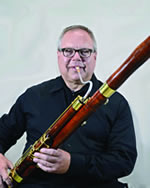 Jim Jeter |
‘The problem with some technically terrific players is that they sometimes have nothing to say…’
I’m not so sure Fritz Kreisler or Artur Rubenstein could win an audition or competition today with all the technically perfect demands on musicians.
(I remember Rubenstein missing lots of notes, but always interpreting wonderfully!)
Perhaps we should think more in terms of musicality freed by proper technique to express itself, rather than thinking of it as technique vs. musicality.
The problem with some technically terrific players is that they sometimes have nothing to say, beyond technical feats – the fastest double tongue, or the most impressive multiphonic, circular-breathing effects.
I have a lot of respect for the “Paganinis” among us, but often I’ve left a performance feeling nothing. Alicia de Larrocha was always the exception – she had monumental pianistic technique, but I never left her performances thinking about her technique, but about the incredible musical expression she created. Her technique allowed her to express fundamental human feelings implicit in the music and she definitely had something to say.
I’m not so sure musicality can be taught in our schools, but I do feel that teachers can request that students think about what they want to say in any given piece, other than playing it faster or with the latest circus effects – these effects are wonderful if they actually add to the musical expression, but all too often I think musical feeling is left in the dust.
(Of course, this is assuming that composers have something expressive to say as well, beyond the latest circus effect or noise manipulation.)
Rudolph Serkin used to say “Play everything slowly, but sometimes in a fast tempo.”
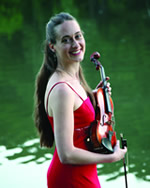 Claudia Schaer |
‘We need to rediscover and redefine the function – the role – that classical music plays in our society’
In my opinion, dime-a-dozen virtuosity is the number-one thing threatening classical music today. Our audiences are bored; the sandwiches we are offering them have been standardized just like those at the local Subway. Those sandwiches are perfectly well and good, but who goes to Subway for an interesting or exciting meal?
In philosophical inquiry, there is a distinction between the “normative” and the “descriptive.” Normative deals with what is good and bad, whereas descriptive deals simply with description.
By creating a focus on technique, ability, accuracy, and so on, we create a focus on the normative, which is inherently boring because it offers only two options: either something is good, or it is bad. However, by focussing on the message in the music – rather than how that message is transmitted – we can re-arrive at sincere communication, and experience the wealth of what the music has to offer, not to mention the wonderful differences that can exist among artists: there is excitement, passion, wildness, tenderness, sweetness, resilience, resolve – and on it goes. The possibilities are endless.
We need to rediscover and redefine the function – the role – that classical music plays in our society. Surely, competitions are not the end, and dazzling displays of virtuosity are best left to sports, which are feat-based, while art is about art and humanity. If we can communicate why it’s important, or interesting, or worthwhile – socially – audiences will feel it and come.
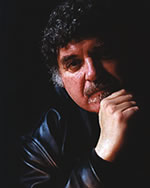 Hal Galper |
‘Technique should never be obvious’
The sole function of technique is to enhance your ability to express yourself. Technique should never be obvious. It must be subservient to the art form whether it be music, painting, dance or writing.
The audience cannot be blamed for responding to what is often called “flash” – the player should be blamed for that. Those players who have opted for a flashy presentation have not thought very deeply about their artistic processes.
It is each artist’s responsibility to have the courage to be brutally honest with oneself through subjective artistic self-evaluation. This kind of self-evaluation must be a constant, on-going process for every artist. A teacher can hardly be blamed for a student’s lack of bravery.
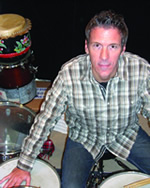 Timothy Lutte |
Picasso: ‘Art is the elimination of the unnecessary’
Yes, music schools and conservatories can teach musicality. This should be, by the way, the point of any technical mastery. However, too few are really doing this. Just ponder the audition repertoire requirements for a conservatory or symphony orchestra. We would be much better served concentrating on efficiency and effectiveness (being able to communicate on your instrument), over quantity and intellectual display. Picasso said, “Art is the elimination of the unnecessary.” I think this best illustrates the point that it is vain to do with too much what can be done with less.
This also brings up the discussion of how we are teaching creativity and music in our schools, as a whole. Is it being presented as just another subject to master, another intellectual pursuit? This often produces outstanding technicians, but not original musicians with actual voices.
There must be a much greater emphasis on creativity and the true role of the arts in schools across the United States, as art leads to a greater understanding of oneself and the ability to communicate that understanding to other individuals.
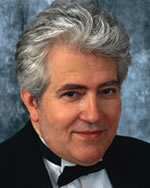 David Close Music director and conductor of the Oratorio Society of Queens |
How do you measure the meaning of a phrase?
I have heard many performances that were long on technique and short on musical expression.
I remember a young lady who was a graduate of a major music school in New York who did not understand the meaning of “Adele’s Laughing Song” from Die Fledermaus but who could hit all the high notes with laser-like precision. No amount of modeling from me or comments by the stage director could break through to her. It’s unfortunately not a new story.
Anthony Tommasini’s article on the advance of piano technique is a case in point.
As a society we deal with the measurable or the “metrics” as they are often called.
The number of accurate notes per bar is measurable; how do you measure the understanding of a phrase’s meaning?
Part of the problem is that there are a number of convincing meanings depending on your point of view or the tradition you espouse.
If you were to compare Daniel Barenboim’s “Les Adieux” with, say, Emil Gilels’, you’d find them incommensurable. But you could measure the speed and accuracy of the playing objectively. Therein lies the problem.
As a society we select for objectively measurable values and we get what we get. The same thing is going on in the stock market with computerized trading that senses the slightest variation. On the basis of sophisticated algorithms, trading decisions occur that have nothing to do with long-term investing in companies of value. People make money who have access to this type of trading. This is not the the way investment was meant to be. Just take Warren Buffett as an example.
We see the same shift in high school football where kids are bulking up to 300 pounds and in beauty pageants where girls who are 4 to maybe 10 years old participate, looking like mini-adults. And you wonder that we can’t seem to develop mature musical understanding.
